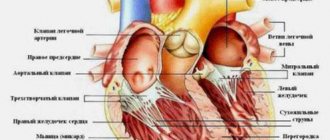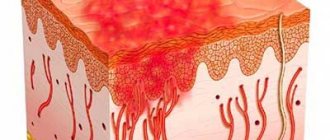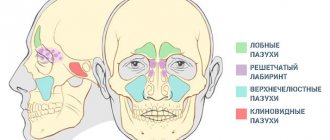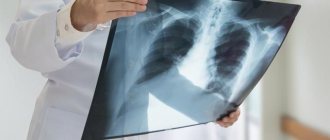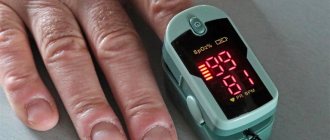Since the start of the pandemic, the World Health Organization has emphasized that COVID-19 spreads primarily through very close personal contact. According to this logic, a sick person exhales heavy droplets containing the virus through the mouth and nose, which settle on the ground before they can fly more than two meters.
But as the pandemic progressed, contact tracing of infected people showed that this was not always the reason. On July 9, WHO recognized this fact and changed its wording. Now she claims that “the possibility of aerosol transmission of the virus at close range cannot be ruled out, especially in certain types of premises, where many people gather, there is no good ventilation and healthy people can spend a long time with infected people.” But what does it mean?
The organization previously held that there was a low likelihood of so-called airborne transmission of the virus outside hospitals, where some procedures produce super-fine particles that remain in the air longer than larger droplets produced by breathing.
Wearing a mask in confined spaces is still a good idea!
The change followed a letter published in the journal Clinical Infectious Diseases and signed by 239 scientists and engineers who assured the WHO and other public health organizations that "the time has come to focus on airborne transmission of COVID-19." The authors of the appeal hope that if WHO recognizes this mechanism of virus transmission, society will begin to pay more attention to indoor ventilation and, perhaps, engineering solutions that will make them safer.
However, in order to answer the question that concerns the average person: “What air is safe and what is dangerous to breathe during the coronavirus pandemic?”, it is useful to understand two questions that science asks in this regard. First, what happens from a physics point of view when a sick person breathes, sneezes or coughs in a room? Second, what patterns have epidemiologists found in situations in which people are exposed to infection and become ill?
Let's start with the first question.
Types of infection
Today, experts have identified several main mechanisms of pathogen transmission from person to person, some of which are well known to ordinary people, while others have no idea about them.
In a simplified scheme, it is believed that diseases are transmitted by airborne droplets, contact, blood and the fecal-oral route. In fact, the spectrum is a little wider and more diverse. Experts offer 6 options for transmission of infection:
- aerogenic;
- contact;
- transmissible;
- fecal-oral;
- vertical;
- blood-contact.
However, some of them are divided into groups.
Article on the topic
Pollen or infection? Diseases that are often mistaken for allergies
Aerogenic option
This option is precisely the well-known airborne route. By the way, there is also such a variety as the airborne dust method of spreading infection. In fact, the aerogenic mechanism of transmission of infection from person to person is based on the fact that pathogenic microorganisms accumulate to a greater extent in the respiratory tract. They are transported to another organism through the air. With airborne transmission, viral particles or bacteria are released into the environment when coughing or sneezing or talking too much, when a person literally sprays saliva. Infection occurs when another person inhales these airborne particles in the form of an aerosol. Most often this happens during close contact.
The airborne dust variant of infection occurs when dust particles with a viral pathogen or bacteria enter the human body (this is relevant if the pathogenic microorganism has the ability to survive in the external environment for a long time). Therefore, after walking with animals on the street, you should thoroughly wash their paws so that they do not spread infection and bacteria throughout the house. The warning about the need to take off your shoes when entering the house is based on the same principle; you cannot wander around the rooms in them, so as not to drag away potential pests.
General signs of infectious diseases
Infectious diseases have a similar pattern of onset of the first symptoms. When infected with a pathogen, general intoxication occurs in the body as a response to changes. Typical manifestations include: fever, chills, feeling tired and unwell, muscle weakness, headache, nausea, sleep cycle disturbances, loss of appetite.
With some infections, a rash may appear on the skin. Sometimes it has a specific character and this makes the diagnosis easier. A characteristic sign of a respiratory infection is coughing and sneezing, sore or sore throat, and hoarseness. If you have these symptoms, it is important to use personal protective equipment to avoid spreading the infection to others. Stomach upset is common.
Contact option
The contact variant is when the infection is transmitted through direct contact. Pathogens, also known as pathogenic microorganisms, can live on mucous membranes, skin, on the surfaces of wounds, etc. They can move upon contact on various surfaces, and then be transmitted to another person, for example, in the presence of microtraumas on the skin. There are two options for transmission of infection - direct (for example, through handshakes, hugs, etc.) and indirect (mediated; in this case, infection occurs through objects - household appliances, furniture, toys, etc.). If there is a suspicion of certain pathologies in one of the family members, it is necessary to very carefully monitor the cleaning schedule in the house - wipe and disinfect surfaces more often, and carry out daily wet cleaning of the floor.
A year is not a period. How long did the worst epidemics in history last? More details
Risk groups for syphilis infection
Anyone who is sexually active can get syphilis. You can become infected from a single partner, so if you have symptoms you should get tested as soon as possible. Meanwhile, some people are more at risk of infection than others:
- Young people who frequently change sexual partners, including sex workers.
- Men who have sex with men (Figure 2).
- Doctors and health workers working with patients with syphilis.
- Family members infected with syphilis.
Figure 2. Cases of primary and secondary syphilis in the United States in 2021, by gender and sexual preference.
An increased risk of infection is observed among men who have sex with other men. Source: cdc.gov The risk of contracting syphilis after sex with someone who is infected increases in people with suppressed immune systems, such as those with HIV. Previously, people receiving donated blood were also at risk, but careful checks of donors make it possible to reduce this danger to a minimum. Screening pregnant women when visiting an antenatal clinic prevents infection of the fetus from the mother.
The course of syphilis: how long does the incubation period last?
Depending on the time elapsed after infection and the nature of the course of the disease, it is customary to distinguish several stages of syphilis. The early stages of the disease include primary and secondary.
The incubation period, when symptoms have not yet occurred, lasts from 8 to 180 days, but on average is 3-4 weeks. During this period, bacteria penetrate through the skin or mucous membrane of the infected person.
The beginning of the primary stage is considered to be the appearance on the affected area of the skin of painless ulcerations with hardened edges - chancre. Such ulcers can appear on the genitals (penis, labia, vagina), as well as in the mouth or rectum if infected through oral or anal sex, respectively.
Over time, syphilitic ulcers turn red and secrete a colorless serous fluid containing large quantities of the pathogen. After 1-2 weeks, the size of the lymph nodes located near them increases, and joint, muscle and headache pain may appear. Primary ulcers heal over time even without treatment, but this does not mean that recovery has occurred, the disease has only moved to the next stage.
The secondary stage of syphilis, which occurs 8-9 weeks after infection, is accompanied by flu-like symptoms:
- elevated temperature,
- fatigue,
- pain in the limbs and head.
During this period, treponema actively spreads throughout the body, as evidenced by the widespread enlargement of lymph nodes. After ten weeks, most people with the disease develop a skin rash. Initially, light pink spots appear, turning into nodules (papules). Depending on the immune response, skin manifestations disappear over time, and the infection becomes suppressed. However, from time to time relapses of the disease occur, since the body is not able to eliminate all infectious foci.
Then, in many patients, syphilis enters a latent stage, during which the pathogen is detected in the body, but there are no obvious symptoms of the disease. Thus, the infection can “sleep” for many years, but sooner or later syphilis strikes the final blow.
After 3-5 years after the onset of the disease, treponema pallidum manages to penetrate many vital organs of the patient - the tertiary stage of syphilis develops. In the lungs, esophagus, stomach, liver, muscles and bones, bacteria cause the formation of nodules called granulomas (“syphilitic gummas”). They are especially common on the skin, mucous membranes, and bones in the form of extensive ulcers. If the palate is affected, a perforation into the nasal cavity may develop. In the aorta, syphilitic nodes cause severe inflammation of the membranes, which can lead to rupture of the aorta and death of the patient.
Over time, a certain proportion of patients develop syphilis damage to the spinal cord and brain - neurosyphilis, which has recently often been classified as the quaternary stage of the disease. About a quarter of untreated patients develop chronic inflammation of the brain, leading to dementia. In patients, the cognitive (mental) functions of the central nervous system decrease, speech is impaired, pain and temperature sensitivity are lost, vision and hearing disappear. The end result can be complete muscle paralysis.
Important! Ignoring syphilis and lack of treatment is fraught with serious long-term consequences for the patient’s health and risk for the people around him. The first symptoms of the disease require prompt diagnosis and treatment measures. A feeling of false shame in such a situation is inappropriate and dangerous.
Transmission option
This type of transmission of infection raises many questions among the population, because this term hides the transmission of pathogenic microorganisms with the help of insects. Diseases can be carried by flies, lice, bedbugs, fleas, and mosquitoes. Among the pathologies that insects can give a person are sleeping sickness, plague, malaria, typhus, dysentery, diphtheria, polio, anthrax, etc.
Here it is worth understanding that insects themselves are not pathogens - they only serve as an incubator for microorganisms that lead to such pathological conditions, and carry them on themselves.
Fecal-oral transfer
A common method of transmission of infection. In essence, this is a pathogen transmission mechanism when a pathogenic microorganism is localized in the gastrointestinal tract. It can come to the surface either with feces or with vomit. At the same time, it lasts for a long time. Infection occurs mainly through dirty hands (this means even invisible skin contamination, for example after playing in the ground or with animals) or contaminated water or food.
You can become infected in this way through contact with objects touched by the patient - linen, food, dishes, etc., as well as through unprocessed foods - unboiled milk, raw meat, unwashed vegetables, etc.
Article on the topic
Wait for the second wave and keep your head down. When will there be a cure for COVID-19?
Hemocontact variant
As the name suggests, this is a variant in which the infection is transmitted through blood. This method can be vertical, i.e. from mother to fetus, sexual, indirect - through contact with infected blood. In addition, there is also an artificial variant of infection, which is possible, for example, during medical procedures or during tattooing.
In most cases, simple hygiene will help protect you - regularly washing your hands with regular soap and avoiding the habit of touching your face and eyes with your hands. You should also handle food carefully and try not to eat unwashed or unprocessed foods.
Possible complications after viral infections
In some cases, the illnesses can lead to serious, possibly life-threatening complications from a viral infection, such as dehydration, bacterial pneumonia, and other secondary bacterial infections. This is especially likely in people at risk of complications. These include those with chronic illness, suppressed or weakened immune systems, infants and the elderlySource: ACUTE RESPIRATORY VIRAL INFECTIONS AND THE HEART. Kirichenko A.A. Consilium Medicum, 2021. p. 22-27. In addition, some types of sexually transmitted viral infections, such as HIV/AIDS and HPV, are themselves dangerous and can lead to serious complications and death.

